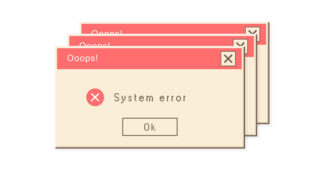Described by some as a Netflix for CPD, Dixons OpenSource videos were originally conceived to make sure all Dixons colleagues had access to the same thinking and learning that the trust share so regularly with visitors. At the time, 15 per cent of maintained secondary schools in England had visited one of our trust’s schools but, as is so typical, it was often harder to facilitate in-trust visits. The idea of sharing our videos came from respected sector colleagues, who persuaded us that the OpenSource content could be of use beyond Dixons.
So we did. And we made access completely free – a commitment we continue to honour. The result is a new platform that draws all the recorded content into a single, searchable location, and the response from the sector has been appreciative, not least because we have shown that we have learned from and responded to feedback.
Our premise from the start has always been that this is our work – take it if it helps, learn from it, build upon it or, indeed, ignore it at will! For us, one of the highest performing trusts nationally, it is an opportunity to widen our trust’s mission and impact beyond our own schools, beyond our geographical location, and to colleagues across the sector. Sharing in this way is core to our way of doing things and has proven particularly valuable in our growth into Liverpool and Manchester.
OpenSource codified Dixons’ content into watchable, listenable bites – nothing as onerous as a podcast or as potentially distancing as a blog. Each episode offers quick, accessible, agile commentary through videos that can be strung together into coherent sequences but also have efficacy alone.
Why let geography limit the ability to be helpful?
The growth of OpenSource has coincided (perhaps with hindsight unsurprisingly) with the trust’s most challenging period of organisational growth. It became a way of communicating internally – to systemise key processes and explicitly define our academy transformation model.
But the why and what of OpenSource are not enough on their own to explain its success. That’s also, and importantly, down the implementation of culture and principles ̶ the how. And because of our focused, rigorous, strategic organisational approach, so many school and trust leaders reached out to us seeking additional connection, communication and resource over the past year and a half that we have built additional packages to meet need.
These new packages, Dixons Insight and Onsite, take OpenSource further by offering the opportunity for trusts and schools to get beyond the ideas themselves and into the granular work of how to implement cultural change in an organisation. They provide schools and trusts with access to support along the journey of organisational change, focused on precise implementation.
Dixons Insight provides access to interactive webinars, a suite of leadership resources and Q&A sessions on practice, culture, leadership and learning with our organisational experts. With this offer, participants are supported to identify the implementation challenges in their organisation and the active ingredients to fix these, developing a clear plan to sustain progress through intentional design, ensuring everything is indelibly linked to mission.
Dixons Onsite takes participants beyond the screen altogether through a bespoke in-depth offer tailored to where schools or trusts are on their journey of organisational change. The package offers the opportunity to incubate key people, in person, in how to get implementation right, standing side-by-side with Dixons leaders throughout the process.
Through our online platform, organisations can join for free to view all of our weekly video content, access Dixons Insight, and enquire about Dixons Onsite. We make no profit from these new ventures. They are modestly priced to cover our costs.
We don’t and have never thought of ourselves as better than others, but we celebrate that our work is in demand. After all, we are all in it for the students, so why let expansion and geography limit the ability to bring helpful, honest and supportive thinking to more trusts and schools?















Your thoughts